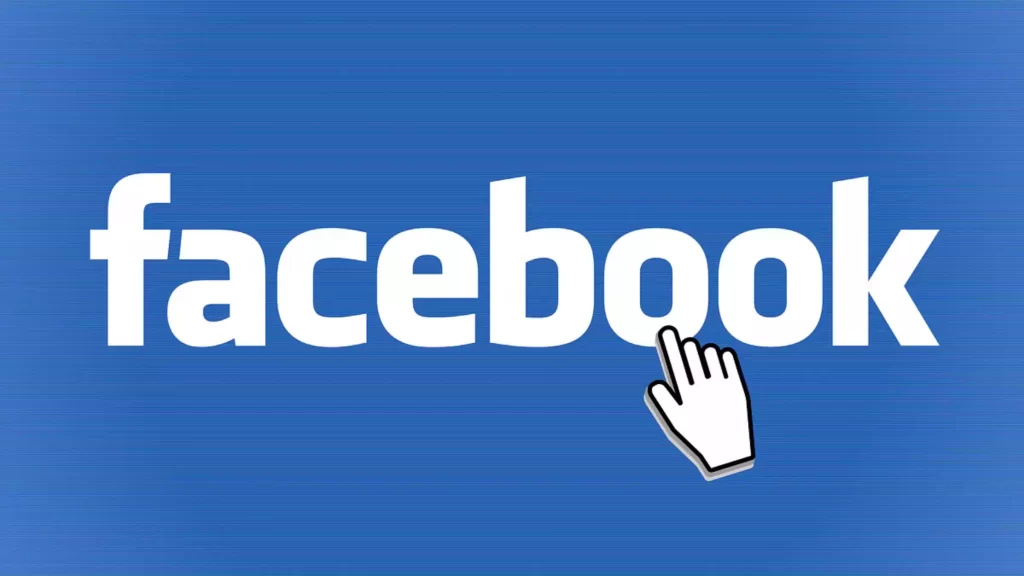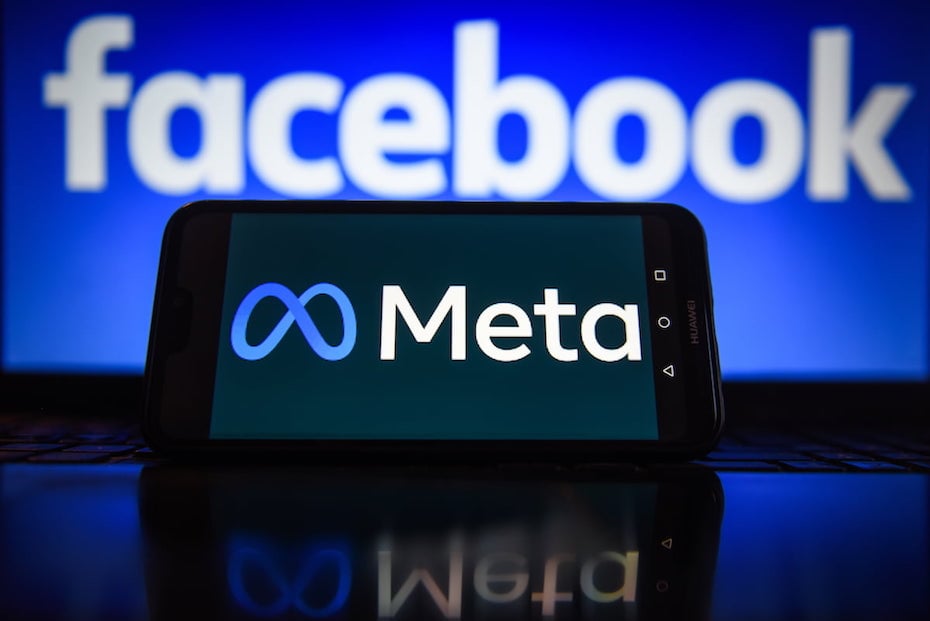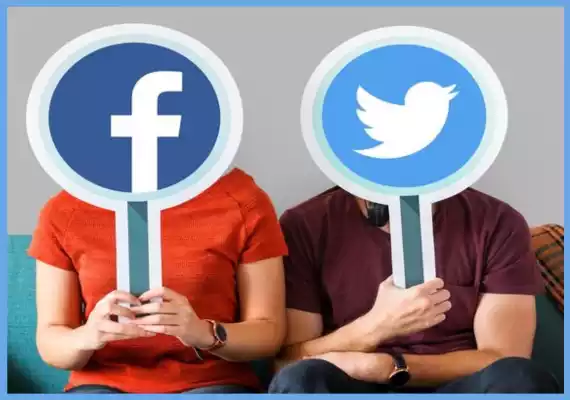Facebook and Twitter is the fact that both are well-known social media platforms that allow users to interact with each other to share content, connect with friends, and engage in online chats.
Facebook was founded in 2004 and it connects billions of users via private profiles, content, and sharing. which allows social interactions as well as business marketing. Twitter was established in the year 2006, and specializes in 280-character “tweets,” facilitating real-time conversations, news, and interaction on a variety of subjects in a simple format.
What is Facebook?
Facebook is a well-known social media platform created by Mark Zuckerberg in 2004. In the past few years, it has grown into a global platform with millions of daily active users. Facebook allows users to create their own profiles as well as make connections with their family and friends and post various types of content like video, text, images as well and links to their feeds.

One of the unique characteristics is the ability of users to connect with content using comments, likes, or shares, which encourages interactions and interaction among users. In addition, Facebook offers various tools for business, such as corporate pages, targeted ads, and analytics, making it an ideal platform to promote digital marketing and connect with a larger population.
But, Facebook has also faced criticism over privacy issues and its influence on online conversation which makes it a subject of debate throughout the age of digital.
What is Twitter?
Twitter is a popular social media platform launched in 2006, known for its microblogging format that encourages short messages called “tweets.” Users can create profiles, follow other users, and share tweets of up to 280 characters in length.
Twitter is renowned for its open and real-time nature, making it a hub for discussions, news updates, and interactions with a global audience. The platform employs features like hashtags to categorize content and trending topics to highlight popular discussions.

It has become a powerful tool for public figures, organizations, and individuals to share information, engage with their audience, and participate in conversations on a wide range of topics. Twitter’s unique format has also led to the development of tweetstorms and threads, enabling users to create longer, connected narratives or discussions.
It plays a significant role in the dissemination of news, cultural trends, and social movements, making it a dynamic and influential platform in the digital age.
Comparison Between Facebook and Twitter
Here’s a simplified comparison chart between Twitter and Facebook:
| Aspect | ||
|---|---|---|
| Purpose | Real-time updates, short-form communication | Personal connections, diverse content |
| Content Limitation | The 280-character limit for tweets | Allows longer posts, images, videos, links |
| Audience Reach | Broad and often global | Personal connections, friends, family |
| Engagement Style | Public, open discussions | More private, personalized interactions |
| Engagement Metrics | Retweets, likes, replies | Likes, comments, shares |
| Trending Topics | Uses hashtags, trends | Uses algorithms to curate news feed |
| Privacy Settings | Limited, often public | Extensive privacy controls and settings |
| Business Opportunities | Promoted tweets, ads | Business pages, targeted advertising |
| Niche Communities | Less focus on niche communities | Supports groups and events for niches |
| User Demographics | Varied demographics, including celebrities | Broad user base, all age groups |
The Facebook Company is Now Meta
In a significant change in branding that has been a major rebranding move, the Facebook company has changed its name to a new name: Meta. The change, which was announced in the latter half of 2021, is important in its mission and mission. Meta intends to establish its position as a pioneer in the advancement of the metaverse.

It is an interconnected virtual universe that incorporates both the technologies of virtual reality and augmented reality. The rebranding demonstrates Meta’s commitment to creating a world where people can work, interact as well and play in an immersive digital environment.
The change between “Facebook” to “Meta” indicates the company’s ambitions beyond social media and to create a new digital experience. While the primary Facebook platform will remain in existence the new brand name as Meta signifies its commitment to shaping the future of web and digital interactions by transforming and innovating ways.
What is the usage of Facebook?
- Connecting With Friends Family: Friends Keep connected to loved ones, no matter if they’re close or far away by posting updates, photos, and messages.
- Social networking: Increase your social circle by establishing new friendships reconnecting with old acquaintances and establishing connections.
- Marketing for Brands and Businesses: Manage and create an online business page that promotes services and products and interacts with customers.
- Marketplace: Sell and buy things, from furniture to electronic items in your local area or to a larger audience.
- Community and Groups: Create or join groups based on common interests and hobbies or affiliations and have conversations with others who share the same interests.
- Invitations and Events: Create and manage events, invite guests, and keep track of RSVPs for parties, gatherings and other gatherings.
- Gaming and Entertainment: Watch videos, play games, and discover engaging content from a variety of makers and sources.
- Educational and Learning: Get access to educational sources and learning communities and connect with your classmates and other academic colleagues.
- Causes and Advocacy: Help raise awareness for causes that benefit charities as well as social issues as well as personal causes by sharing news and fundraising events.
Uses of Twitter
- News updates: Keep up-to-date with recent news including breaking news, breaking news, and top stories from all over the globe.
- Networking: Meet professionals, colleagues, and influencers within your industry or area of interest.
- Socializing: Socializing Connect with family members, friends, and other acquaintances through posting personal updates and messages.
- Promotion: Promote blogs, products, services podcasts, and other content to an international audience.
- Branding: Manage and build a professional appearance for your personal or business brand.
- Customer Services: Respond to customer queries or feedback in real-time.
- Advocacy: Increase awareness and encourage support for political, social, or other charitable causes.
- Entertainment: Engage and follow the lives of celebrities comedians, entertainers, and comedians for entertainment and humor.
- Learning: Gain insight and educational resources by following thought leaders and experts.
- Engaging in the latest trends: Participate in debates, discussions, and discussions on topics that are trending and hashtags.
Facebook vs Twitter Post Audience
The demographics that are a part of Twitter as well as Facebook differ in many important ways. Twitter’s users tend to be a little younger, and there is a large number of users belonging to the age group of 18-29.
It is a popular choice for a tech-savvy user base, frequently seeking immediate updates and engaging in short brief interactions. Twitter is also popular with journalists, influencers as well as professionals who use the platform to network and for news distribution.
Facebook has a more broad age range and an impressive number of elderly users. It’s a great choice for a broad segment of people, which includes families as well as companies. The majority of Facebook users want an enhanced, multi-media experience.
The focus is on being connected with family and friends sharing longer-form content, and participating in conversations within a social circle. In the end, the decision among Twitter and Facebook is often based on the desired audience and communications goals.
Facebook vs. Twitter: User Engagement
Facebook:
- Personal Connections: Facebook has been used to stay in touch with family members, friends, and intimate acquaintances. This is why the way people interact is more personal and centered around keeping connections.
- Wide Variety of Content: It allows users to share videos, text, images as well as links, and other content. The algorithm’s algorithms prioritize the content of friends and websites where users are frequently in contact.
- Engagement Metrics: Facebook is a leader in engagement measures such as comments, likes, and shares. These interactions help increase the popularity of posts in News Feed.
- events and groups: Facebook offers features such as events and groups that provide specific communities for discussion and the organization of events.
Twitter:
- The Web 2.0 is open and public: Twitter is inherently more open and public. Twitter users often interact with a larger, often world-wide public. Tweets are accessible to everyone while discussions can be open for people from all over the world.
- Short-form content: Twitter’s 280-character limit for tweets, Twitter allows for concise, quick communication, which leads to swift interactions.
- Retweets and Replies: Engagedness on Twitter is typically measured through Retweets (sharing other tweets) and responses to tweets. These actions help increase the popularity and distribution of content.
- Real-time nature: Twitter has a great record of live-streamed engagement. Twitter users engage in discussions and follow topics that are trending and can participate in live events in the course.
Privacy and Security
Security and privacy Security and privacy on Facebook Twitter and Twitter differ in many ways. Facebook provides powerful privacy controls that allow users to control who is able to view their profile and posts. The company has come under scrutiny for its practices for collecting data However, users can alter the settings for sharing data to a certain extent.

Facebook offers two-factor authentication (2FA) for increased security and lets users identify and block harmful websites or individuals. Twitter is inherently more public and offers fewer privacy settings, however, users have the option of making the accounts of their choice private.
Twitter is a data-driven platform that collects information to promote its services, but also gives users the option to turn off personal advertisements.Both platforms have security measures that are in place to stop fraud and impersonation and also verify the accounts of celebrities.
Users should know the security and privacy settings on each platform, and adapt the settings to suit their needs and security issues.
Advantage and Disadvantage
Pros of Facebook
- Large user base: Facebook has a vast and diverse user base which makes it a great platform to connect with a wide range of people. This includes family members, friends and even colleagues.
- Rich Multimedia Sharing: Facebook allows for the sharing of images, videos, and longer-form media, making it perfect as a personal update, story telling, as well as branding promotion.
- A robust advertising platform Companies can make use of Facebook’s powerful advertisements to reach specific audiences that can be extremely efficient for marketing campaigns.
- Groups and Events: Facebook offers features such as events and groups which facilitate planning events social building, community building, and socializing.
- Personalize Privacy Settings Users have a lot of options for setting their privacy preferences, which allows users to control who can view their content.
Cose of Facebook
- Privacy Beware: Facebook has faced controversy over security and privacy of data for users that have raised concerns about how the platform handles personal data.
- Algorithmic Feed: The algorithmic feed may prioritize the content of advertisers and popular pages over updates from friends, thereby reducing the impact for personal posts.
- information overload The sheer volume of content available on Facebook can result in an overload of information, which makes it difficult to locate meaningful information.
Pros of Twitter:
- Real-time updates: Twitter excels at giving real-time updates and news and is a great source of information about recent events and trends.
- Simple Communication The limit of characters (currently at 280 characters) allows for concise and clear communication, making it easier to share thoughts quickly and news.
- Engage Possibilities Retweets, retweets and replies allow for easy interaction and engagement with a worldwide audience.
- Hashtags, Trends Twitter’s use of hashtags lets users easily find a list of discussions and topics that are trending which makes it an ideal platform to participate in discussions.
Cos of Twitter:
- Limited Character Limitation of Characters The character limit is prohibitive for communicating information in detail which can result in incomplete or fragmented messages.
- Harassment and Troll Concerns: Twitter has faced problems related to online harassment and abuse, which could occasionally deter users from participating in discussion.
- Algorithmic timeline Similar to Facebook, Twitter has also implemented an algorithmic timeline that can alter the order in which tweets are posted which could impact the reach of the content.
- less multimedia-centric Although Twitter allows multimedia content, it’s not as rich in multimedia as Facebook which could reduce its appeal to certain types of sharing content.
Twitter vs Facebook: Which Is Better?
Twitter:
- Real-Time Engagement If you’re looking to be able to join in conversations that are live or follow breaking news or join in discussions on topics that are trending the fast-paced nature of Twitter is the best choice.
- short-form content: The Twitter 280-character limit makes it easy to communicate quickly and in a short time and is ideal to share quick news, ideas and sharing hyperlinks.
- Forums for Public Discussions and Online Discussions If you like open discussion with a worldwide audience and you are at ease with strangers engaging in the content you post, Twitter would be the better option.
- Trends and hashtags: If you’re looking to use hashtags and trends to increase visibility, Twitter’s trending subjects offer a way to do this.
Facebook:
- Personal Connections If the primary purpose is to make connections with family members, friends, and close friends, Facebook’s focus on relationships with friends and family is better.
- Multiple Content Types When you plan to publish many different kinds of content, such as video, text, images as well and hyperlinks, Facebook accommodates this diversity.
- Marketing and Business: If you’re a company looking to expand your advertising opportunities Facebook provides tools such as business pages, targeted advertisements, and integration with e-commerce.
- niche Communities: Facebook’s groups and events feature lets you interact with communities that are niche and organize events.
Summary
Facebook as well as Twitter are two of the most popular social networks, both with their distinct features and functions. Facebook is primarily focused on personal interactions, sharing content, and business marketing.
Twitter is a leader in live discussions as well as news updates and short interactions. The decision to choose between them will depend on your needs and goals within the digital world.

